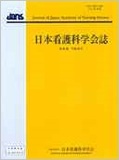Japanese
English
- 販売していません
- Abstract 文献概要
- 参考文献 Reference
要旨
目的:本研究は,患者教育の変遷を,看護基礎教育と臨床現場の実践という2つの視座から検討し,戦後70年の看護の発展を明らかにした.
方法:Rankeの実証史学を踏襲した歴史学の手法を用いた文献研究である.対象とした史資料を,一次資料,二次資料,三次資料に分類した.分類した史資料の史料批判を行いながら,それぞれの史資料を照らし合わせ患者教育が発展していく一連の連関を分析し論証した.
結果:1960〜70年代から生活習慣病の増加や高齢化の進展によって指定規則が改正され,看護基礎教育における患者教育の学習基盤が整えられた.それに伴い,個別的な対象者理解と分析的な視点に基づいた学習が行われた.1980年代から人権意識の高まりに伴い,臨床現場の実践では,患者の意思決定を尊重する援助が行われた.また,新自由主義政策の導入によって,患者の能力へのかかわりが求められた.
結論:患者教育は,政治や経済の発展に即しながら,看護基礎教育や臨床現場の実践を変革させてきた.
Objectives: This study examines the trajectory of patient education from the two perspectives of basic nursing education and clinical practice, to shed light on the development of nursing in the 70 years since the end of World War II.
Methods: This literature review employed historical methods following Ranke's positivism-based history. The materials analyzed were categorized as primary, secondary, and tertiary. By conducting a source criticism of the categorized materials, this paper examined the relationship between the stages of patient education development by checking them with each piece of source material.
Results: Since the 1960s and 1970s, as the prevalence of lifestyle-related diseases increased and an aging society emerged, the regulations for educational institutions for public health nurses, midwives, and registered nurses were revised. Additionally, the learning foundations for patient education in basic nursing education were prepared. Learning has come to be conducted from an analytical perspective that aims to understand patients as individuals. Since the 1980s, awareness regarding patients' human rights has increased. In clinical practice, patient decision-making is now encouraged. Furthermore, the introduction of neoliberal policies necessitates that clinicians engage with patients.
Conclusions: Patient education has revolutionized basic nursing education and clinical practice while changing with political and economic developments.
Copyright © 2016, Japan Academy of Nursing Science. All rights reserved.


